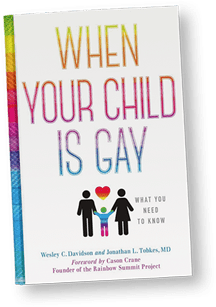Life is not easy for the LGBTQI community. Youth.gov reports that lesbian, gay and bisexual youth have:
- much higher levels of suicidal ideation, i.e. 15.1% to 34.3% of lesbian and gay high school students have attempted suicide at least once as opposed to
- Heterosexual students who account for 3.8% to 9.6% of attempted suicides.
- More than 50% of transgender male teens who participated in a Human Rights Campaign survey reported attempted suicide in their lifetime.
A May 2019 survey conducted by U. Conn and HRC of 12,000 LGBTQ 13-17 year olds in the United States found that most of these LGBTQ teens are experiencing extreme levels of anxiety and stress daily in school and at home.
Here are the key points of that survey:
- 77% of respondents reported that they felt depressed in the last week.
- 95% experience trouble sleeping.
- More than ¾ of the teens surveyed reported feelings of hopelessness and worthlessness, signs of depression.
At home:
- 67% said they’ve heard families make negative remarks about their sexual orientation.
- Non-acceptance is worse for LGBTQ trans and youth of color, the latter also dealing with racial discrimination.
To make your child’s load less burdensome, make your house a safe haven where your child feels accepted. To do this:
- Accept that you do not have the power to change your child’s sexual orientation. Don’t think being LGBTQ is a phase or a choice.
- If you reacted badly to your child’s coming out, it’s never too late to remedy the situation. First apologize. For example, you might say something like “what you told me last week really came as a surprise to me. While it may take some time to digest the news, I will always love you.”
- Demonstrate in both words and acceptance that you will always love and support him/her unconditionally.
- Open up discussions about other LGBTQ people to get your child to open up about his/her/theirs sexual identities.
- Don’t avoid the topic of dating and relationships.
- Ask your child the same questions you ask your heterosexual child: his love interest, what’s happening with that special person. If you have your cisgender child’s boyfriend/girlfriend to dinner, also invite your LGBTQ child’s boyfriend/girlfriend as well.
For more tips on supporting your LGBTQ child, see When Your Child Is Gay: What You Need To Know. (Sterling: 2016) by Wesley C. Davidson and Jonathan L. Tobkes, M.D.
Finally, and most importantly, take the emotional temperature of your child. Know the signs of depression outlined on http://www.youth.gov. The National Association of Mental Illness (NAMI) has a Helpline: NAMI Helpline 800-950-NAMI.

When Your Child Is Gay: What You Need To Know
For more detailed advice, see book, co-authored with a mother of a gay son and a psychiatrist, Jonathan L. Tobkes, M.D.